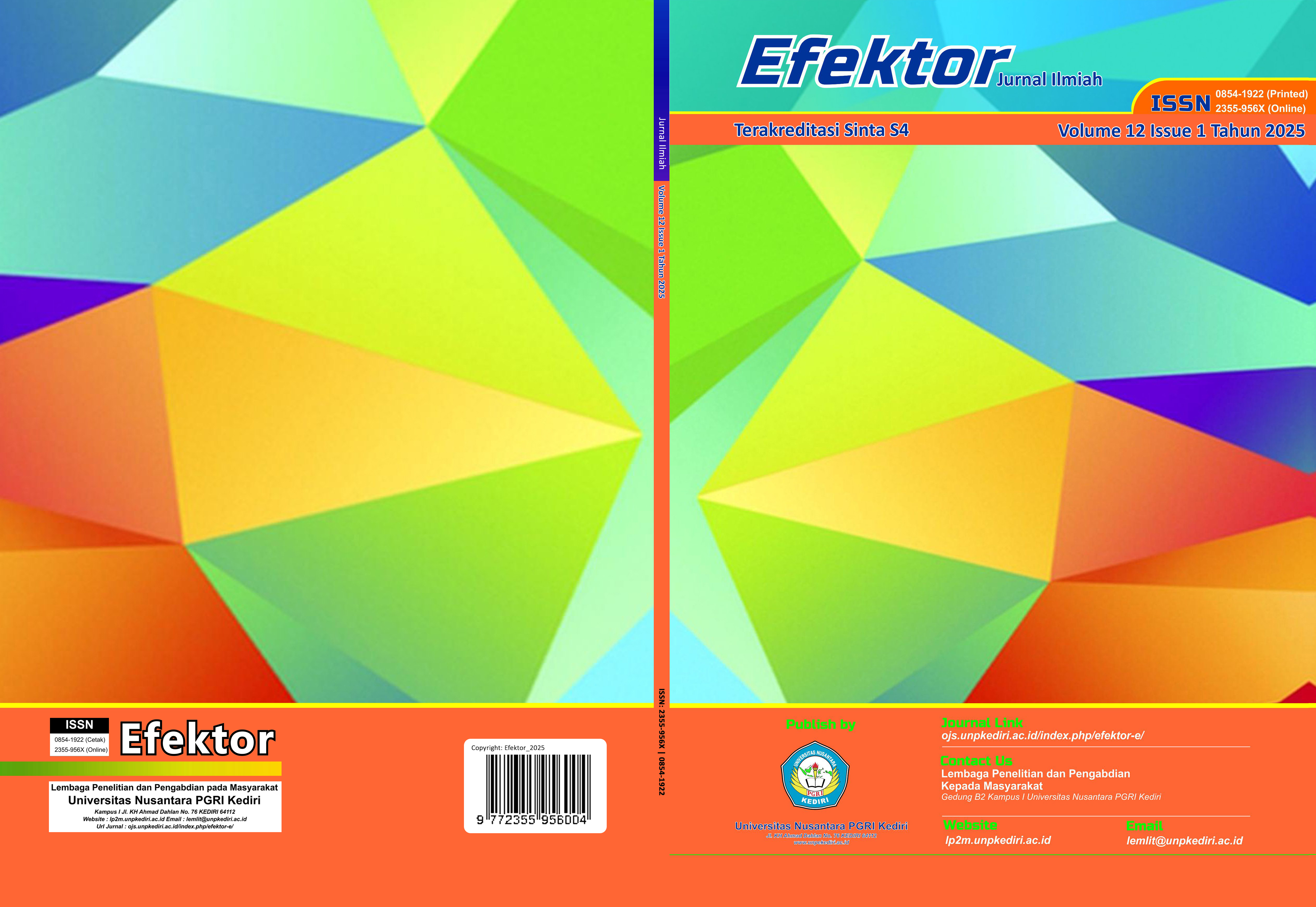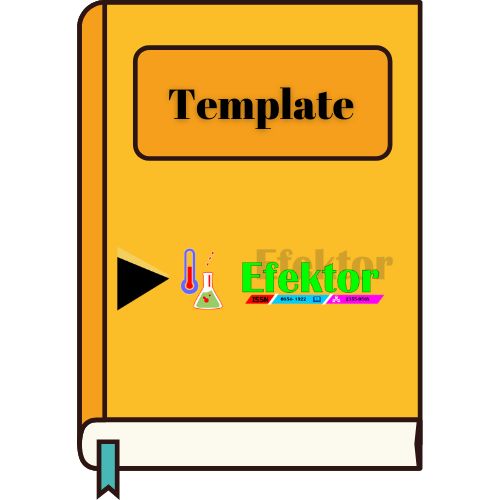The Influence of the Learning Environment, Literacy Culture and Infrastructure on the National Assessment Results of State Elementary Schools in Tulungagung District
DOI:
https://doi.org/10.29407/e.v12i1.25231Abstract
Improving the quality of education is one of the main focuses in the development of human resources in Indonesia. This is in line with the government's vision to produce a generation that is smart, competitive and has character. One important indicator in measuring the quality of education is the results of the National Assessment, which includes reading literacy, numeracy, and character surveys. The implementation of the National Assessment as an assessment instrument in the Indonesian education system certainly presents both challenges and opportunities for schools across the country, including Tulungagung. The National Assessment is designed to provide a comprehensive picture of the quality of a school's education, covering aspects of literacy, numeracy and character. The result of the National Assessment in several public primary schools in Tulungagung sub-district show significant variations in achievement between schools. This condition indicates that three are factors that influence the resuts of the National Assessment, both from within and outside the learning environment. The purpose of this study was to determine the effect of learning environment, literacy culture and infrastructure facilities partially and simultanerously on the results of the National Assessment of Public Eementary Schools in Tulungagung District. The type of research used in this study is associative and the research method uses a quantitative approach. The population in the study amounted to 25 institutions. The sampling technique used is saturated sample. The data collection tool is a questionnaire and uses mlutiple linear regression analysis.
References
Arikunto, S. (2012). Prosedur Penelitian: Suatu Pendekatan Praktik. Jakarta: Rineka Cipta.
Ahsani, E. L. ., Emy, M., Laila, S. ., Chusnul, I., & Vina, A. (2021). Pengaruh Sarana Prasarana dalam Menunjang Prestasi Belajar Siswa SD di Sekolah Indonesia Den Haag. Modeling: Jurnal Program Studi PGMI, 8(1), 52–63.
Angrainy, A., Fitria, H., & Fitiani, Y. (2020). Pengaruh Sarana Prasarana dan Lingkungan Keja tehadap Kinerja Guru. Jounal of Education Research, 1(2), 154–159. https://doi.org/10.37985/joe.v1i2.15
Annisa, K. M., Setiawan, D. A., & Sesanti, N. R. (2021). Membangun Budaya Literasi dalam Kemampuan Berbahasa pada Siswa Sekolah Dasar. Seminar Nasional PGSD UNIKAMA, (5 November), 136–146.
Annisa, M., Tanjung, F. Z., & Ridwan, R. (2016). Analisis Sarana dan Prasarana Sekolah Dasar Berdasarkan Tingkat Akreditasi di Kota Tarakan. JPI (Jurnal Pendidikan Indonesia), 5(2), 134. https://doi.org/10.23887/jpi-undiksha.v5i2.8934
Harso, O. A., & Seku, A. Y. (2023). Pengaruh Lingkungan Belajar terhadap Hasil Belajar IPA Siswa SMPK Inemete Nangapanda. Jurnal Inovasi Pendidikan, 3(9), 7589–7594.
Lestari, F. D., Ibrahim, M., Ghufron, S., & Mariati, P. (2021). Pengaruh Budaya Literasi tehadap Hasil Belajar IPA di Sekolah Dasar. Jurnal Basicedu, 5(6), 5087–5099. https://doi.org/10.31004/basicedu.v5i6.1436
Mayasari, D., Isman, M., Studi, P., Pendidikan, M., Muhammadiyah, U., Utara, S., Budaya, E., & Sekolah, L. (2023). Efektivitas Budaya Literasi Sekolah (Studi di Sekolah Dasar Negeri 163080 Kota tebing tinggi) 9(2), 295–301.
Muslimin, T. A., & Kartiko, A. (2021). Pengaruh Sarana dan Prasarana terhadap Mutu Pendidikan di Madrasah Bertaraf Internasional Nurul Ummah Pacet Mojoketo. Munaddhomah: Jurnal Manajemen Pendidikan Islam, 1(2), 75–87. https://doi.org/10.31538/munaddhomah.v1i2.30
Nuhaliza. (2021). Menciptakan Lingkungan Kaya Literasi Untuk Anak Sekolah Dasar. Universitas Riau: Program Studi Pendidikan Bahasa dan Sastra Indonesia, 1–8.
Sholikhah, F. F., & Puwani, A. T. (2023). Konsep Assesmen Kompetensi Minimum dalam Meningkatkan Kemampuan Literasi Numerasi Peserta Didik. Al-Ikmal: Jurnal …, 27–33.
Sonya Fiskha Dwi Patri. (2022). Konsep Assesmen Nasional (AN) untuk Meningkatkan Mutu Proses dan Hasil Belajar. Juenal Inovasi Edukasi, 5(1), 43–50. https://doi.org/10.35141/jie.v5i1.285
Wardani, H. K., Darusuprapti, F., & Hajaroh, M. (2022). Model-Model Evaluasi Pendidikan Dasar (Scriven Model, Tyle Model, dan Goal Free Evaluation). Jurnal Pendidikan: Riset dan Konseptual, 6(1), 36. https://doi.org/10.28926/riset_konseptual.v6i1.446
Published
Versions
- 2025-05-31 (2)
- 2025-05-31 (1)
Issue
Section
License
Copyright (c) 2025 Dodik Hariyadi, Imam Sujono, Muhamad Abdul Roziq Asrori

This work is licensed under a Creative Commons Attribution-ShareAlike 4.0 International License.
Authors who publish with this journal agree to the following terms:
- Copyright on any article is retained by the author(s).
- The author grants the journal, the right of first publication with the work simultaneously licensed under a Creative Commons Attribution License that allows others to share the work with an acknowledgment of the work’s authorship and initial publication in this journal.
- Authors are able to enter into separate, additional contractual arrangements for the non-exclusive distribution of the journal’s published version of the work (e.g., post it to an institutional repository or publish it in a book), with an acknowledgment of its initial publication in this journal.
- Authors are permitted and encouraged to post their work online (e.g., in institutional repositories or on their website) prior to and during the submission process, as it can lead to productive exchanges, as well as earlier and greater citation of published work.
- The article and any associated published material is distributed under the Creative Commons Attribution-ShareAlike 4.0 International License













